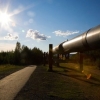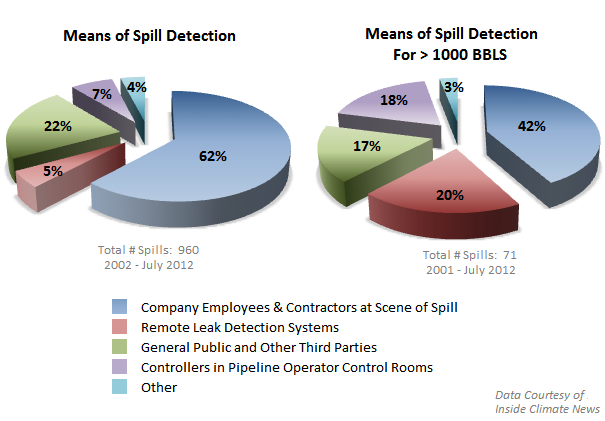RL Blogs

By Eve Harrison
Sep 29, 2012Insightful overview of oil pipeline spill vulnerabilities and why opponents of new pipeline builds are worried. |
||
|
With all of the latest technology available, it would seem obvious that sensors, put in place to help oil companies detect spills, would work as they are supposed to. After all, the world depends entirely on oil as a main energy supply and with spills prices can skyrocket depending on the magnitude of the situation. According to a new report recently put out by InsideClimate News, it seems that, over the past decade, the public has detected more spills than technology has.
promise that spills can be detected and fixed within minutes of occurring. However, after analyzing 10 years of data, InsideClimate News says that leak detection systems have not worked as well as the public might think.
According to this report, data from the Pipeline and Hazardous Materials Safety Administration between 2002 and July of 2012 showed that these systems only detected 5 percent of spills that occurred within the U.S. This same data noted that the public reported 22 percent of spills during this 10-year period. Oil company employees that were working at the site of the spill reported 62 percent of spills.
While these numbers do seem shocking compared to what many companies may discuss in their ads, industry experts claim to see no surprises with these numbers. InsideClimate News decided to interview Richard Kuprewicz, president of a consulting firm that helps government agencies with their pipeline questions. Kuprewicz has said that there are limits on the ability of technology to detect and prevent these spills.
The Growing Importance of Leak Detection
Although companies aren’t blatantly lying to the general public about detection practices, since these leaks can happen out of nowhere and are tough to catch remotely, the important thing to remember is that better leak detection is a must in near future.
Within the next five years, the oil industry plans to build miles of new pipeline that will go through important areas with wildlife and drinking water supplies. The Keystone XL, TransCanada’s major project, plans to carry dilbit through its pipes. Dilbit, a unique mixture of heavy crudes and bitumens, has been known to be much tougher to clean up compared to normal oil. During 2010, a spill in the Kalamazoo River involving dilbit caused the cleanup process to take quite a bit longer because the leaking material would sink to the bottom of the river.
What’s interesting to note is that just 10 days before this incident occurred the operators of the pipeline noted that a spill could be shut off within 8 minutes of occurring. In reality, the company took 17 hours to realize that a spill had happened. While companies employ a variety of different methods in order to check for leaks, the main system being used is known as the “remote leak detection system.” This system, based on sensors, computer programs, and technicians, allows for 24-hour watching of the pipeline.
Why Is Current Technology Failing to Detect Oil Leaks?
According to many experts, the current remote systems today have been failing to find leaks because sensors work well when the spills are quite large. When smaller spills occur, which is much more common today, sensors are not as accurate. This is most likely the main reason why technology is so heavily attacked by opponents of new pipeline construction. According to InsideClimate News, 76 percent of leaks over the last 10 years involved 30 barrels of oil, or less.
Is it really fair to blame these systems? While the oil industry pours millions of dollars each year towards software firms for better systems, the truth is that there are limits on how well these systems can detect spills. Current remote leak detection systems work best when the oil is flowing at a steady pace; if pace ever changes significantly in steady flow pipelines, the spill is easy to spot. However, with many current and new pipelines, like the Keystone XL, the flow of oil changes dramatically throughout the day, making it difficult for sensors to determine how much oil should be coming through at a certain point.
Although all of the leaks cannot be detected and stopped so easily, and there is no such thing as perfect detection system to prevent all oil leaks from occurring, great companies will continue to implement improvements to leak detection systems along with skilled technicians in order to prevent major disasters from happening. | ||
|
|

.jpg)








